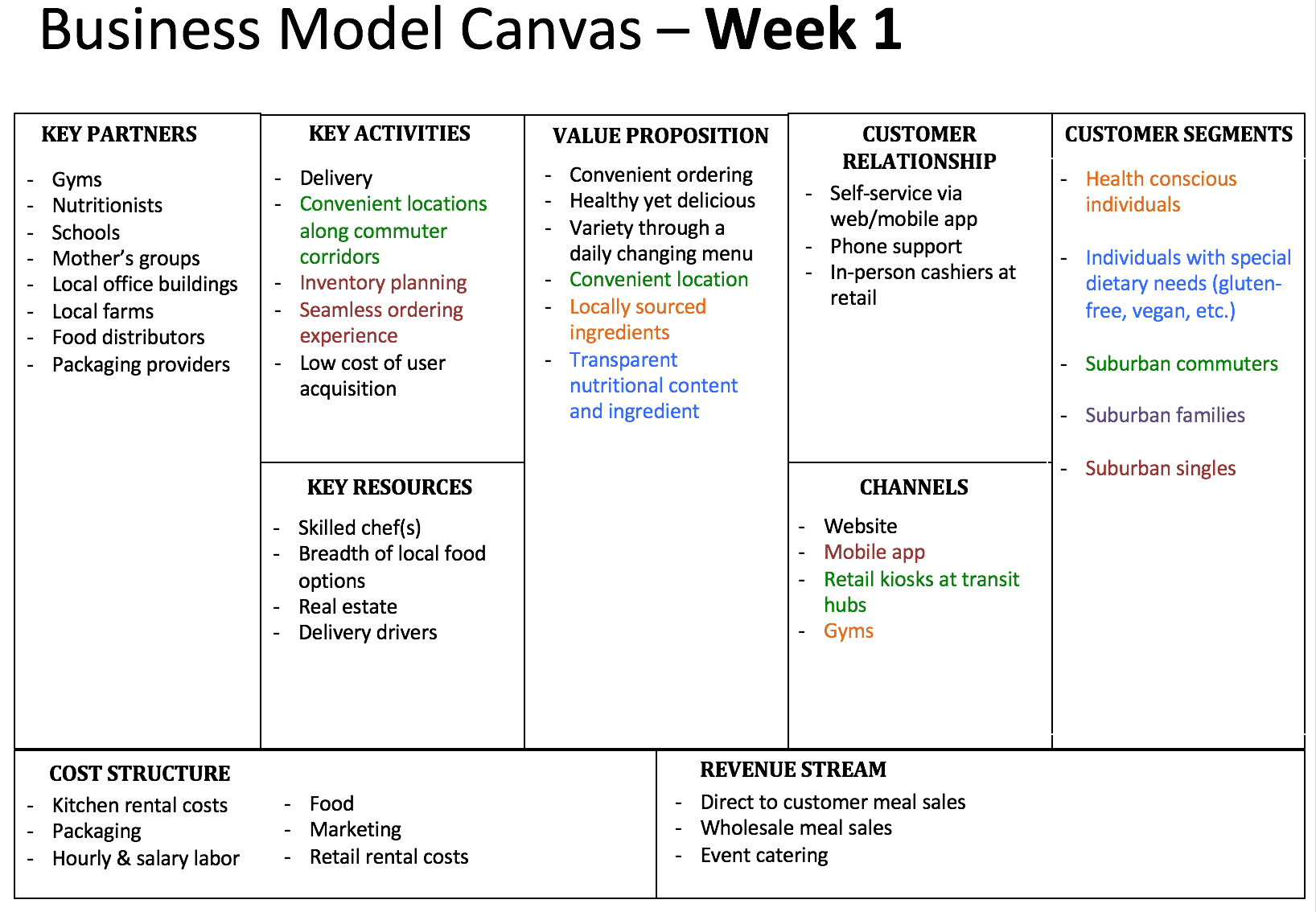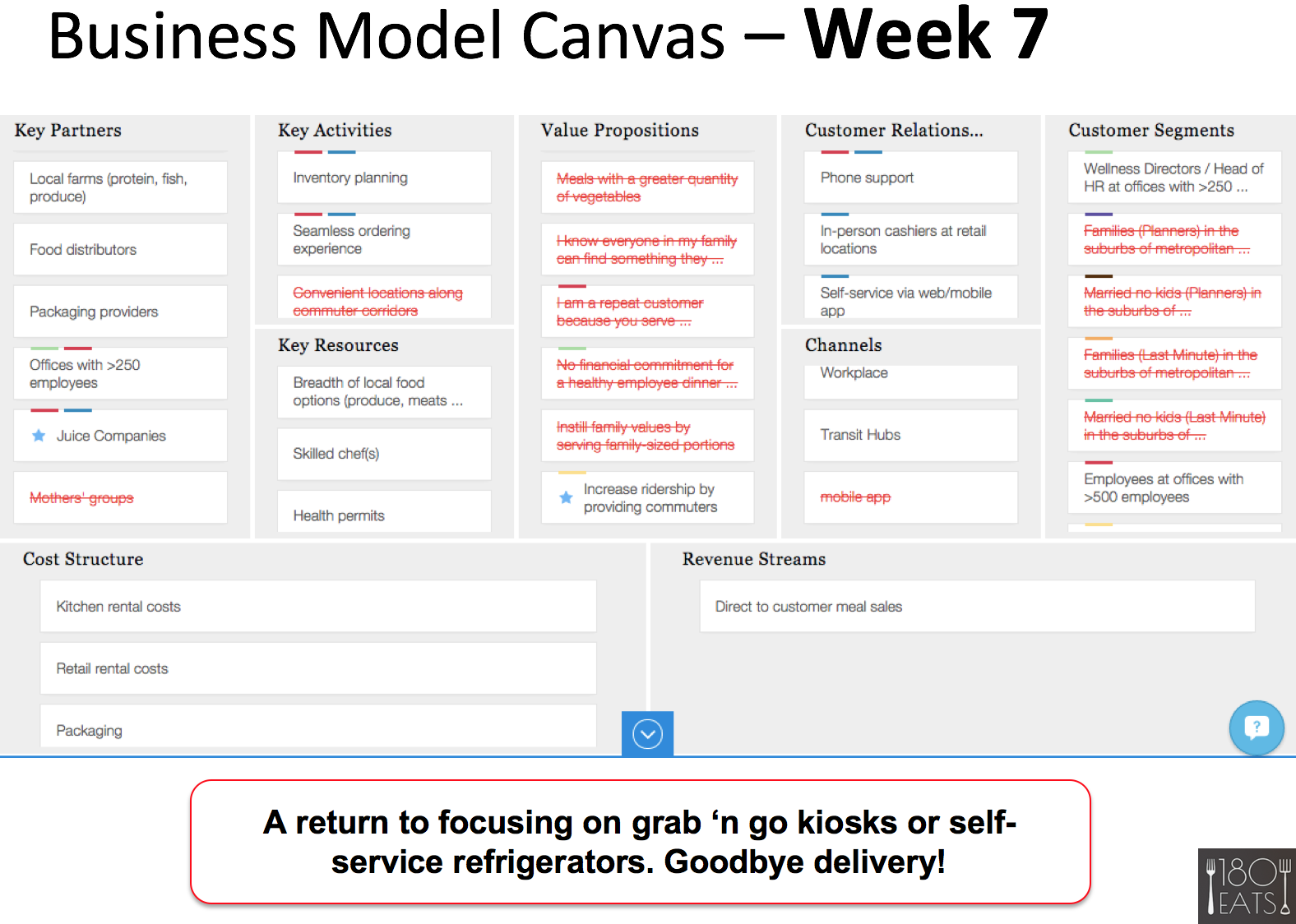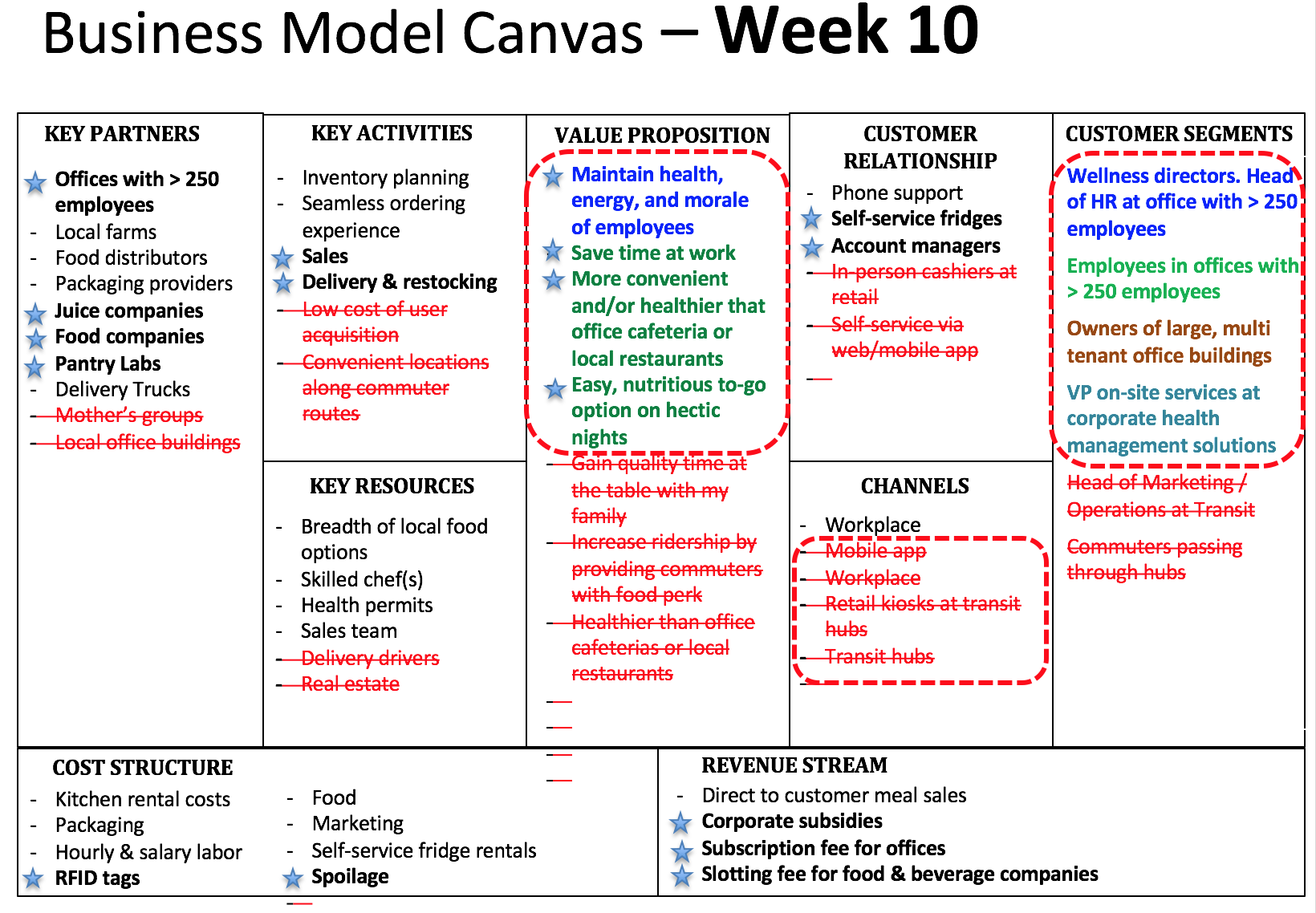180Eats
Customer Development and User Research

Role
User Experience Researcher
Method | Tool
Interviews
Survey | SurveyMonkey
Business Model Canvas
Apply the lean startup methodology to find product-market fit of an early stage startup, 180Eats, delivering simple, healthy weeknight meals for suburban families and commuters. We received mentorship by Steve Blank, author of The Four Steps to the Epiphany and The Startup Owner’s Manual.
PROCESS
180Eats started with a minimum viable product delivering weeknight meals to individuals and families in Marin County. The startup had already been delivering 200 meals per week to customers to test the market, and we had an initial set of early adopters to research and test with.
From there, we engaged in customer discovery through qualitative and quantitative user research to better understand their needs. We conducted over 100 interviews of customers, industry experts, potential partners, and competitors and designed a SurveyMonkey survey to assess customer retention and satisfaction.
We used the Business Model Canvas to understand our value propositions, and highlight our biggest assumptions. One differentiator from other competitors like Munchery was that last-minute customers who also wanted healthy meal options could order up to 4pm on the same day. However, this proved to be a weak differentiator as Munchery was able to offer a similar “feature” soon after. Thus, we needed a better solution to cater to this last-minute group of customers.
Another business model assumption was that the unit economics (customer acquisition cost and customer lifetime value) made the company viable. We tested this assumption by deploying a SurveyMonkey survey to current customers assessing their needs and overall satisfaction. We received a total of 178 responses and analyzed retention of current customers by cohort. Inactive customers were satisfied less than 60% of the time with portions, nutritional content, presentation, and quality and taste of the meals. First-time customers were satisfied only 50% of the time with packaging, portions, nutritional content, and presentation. From this, we learned that customers did not perceive our initial value propositions as we expected.
We ran small experiments to test different business models such as:
• Channels: Corporate distribution to companies with large offices in the Bay Area (grab-n-go), food truck, and micro-retail location at the Larkspur Ferry Station (large commuter hub)
• Delivery: removal of order cutoff window
• Revenue: Subscription model with loyal customers
KEY LEARNINGS
We learned to test our assumptions quickly and cheaply. In week 7, we pivoted the startup to focus priorities on testing corporate and on-the-go distribution channels rather than the delivery to consumer channel due to our research findings that the delivery channel had low margins and was becoming an increasingly saturated market. Corporations, on the other hand, had a clear need for freshly prepared meals – not only for dinner, but also breakfast and lunch. By week 10, we had implemented a test for the corporate grab-n-go model by installing a smart fridge at a Bay Area tech company.
Being an effective startup founder is about starting and validating a product vision or key assumptions and not necessarily listening to all advisors or even users. Ultimately, the founding team needs to combine their intuition, research findings, and knowledge of the business to provide direction to the startup.
OUTCOME
Through our customer discovery process, we pivoted 180Eats from being a business to consumer startup to become business to business. 180Eats was sold to Lokl, and the CEO went on to found Byte Foods, a startup that uses IoT refrigerators to serve fresh, healthy meals and snacks 24 hours a day.


